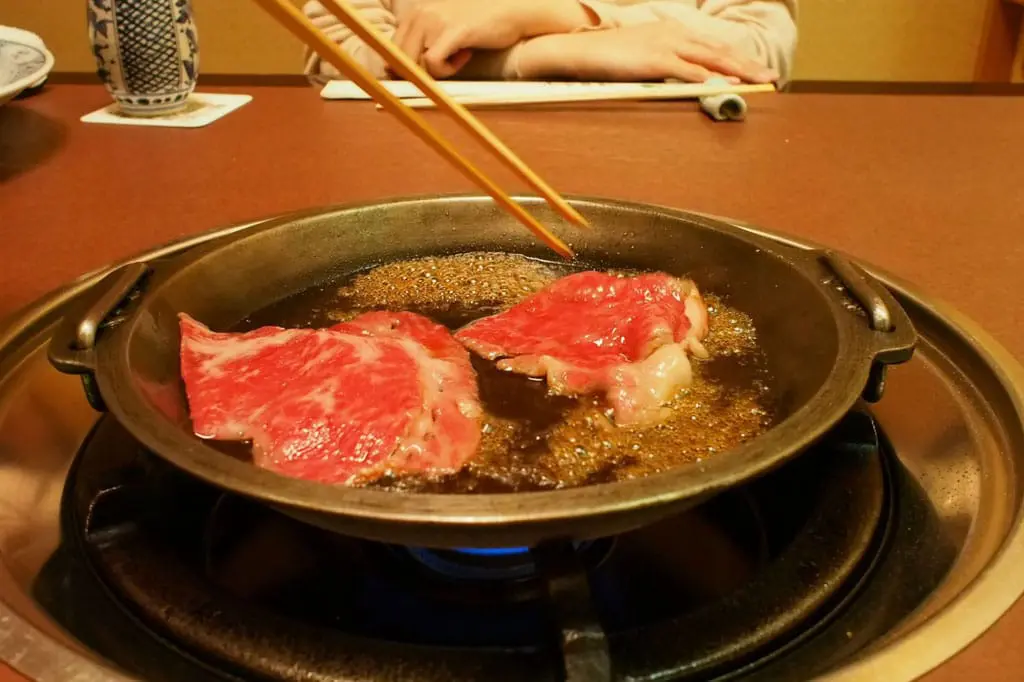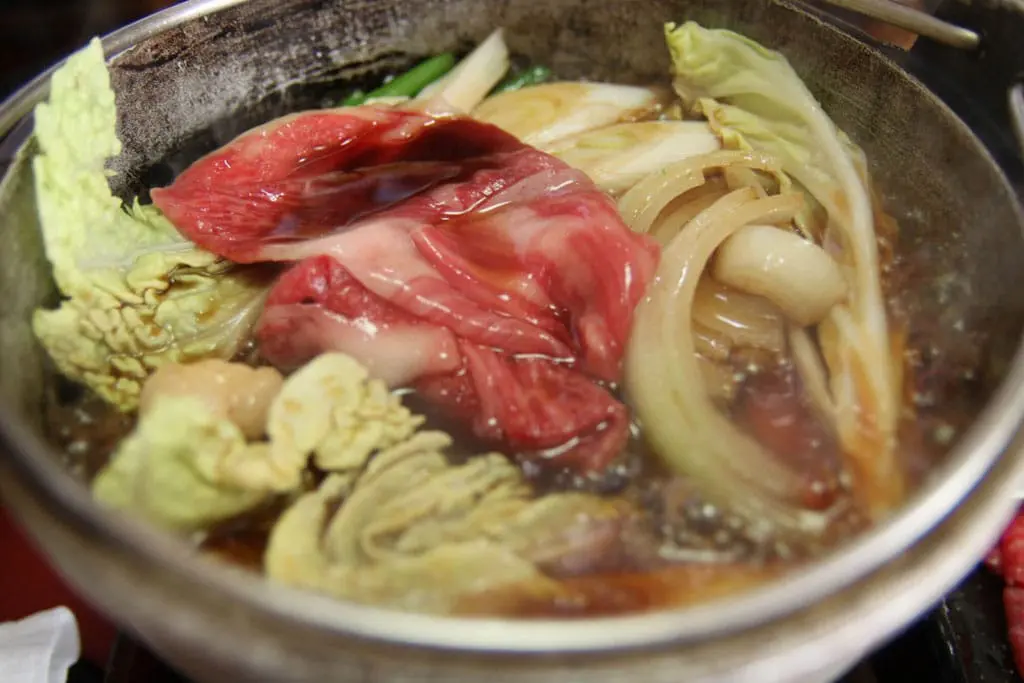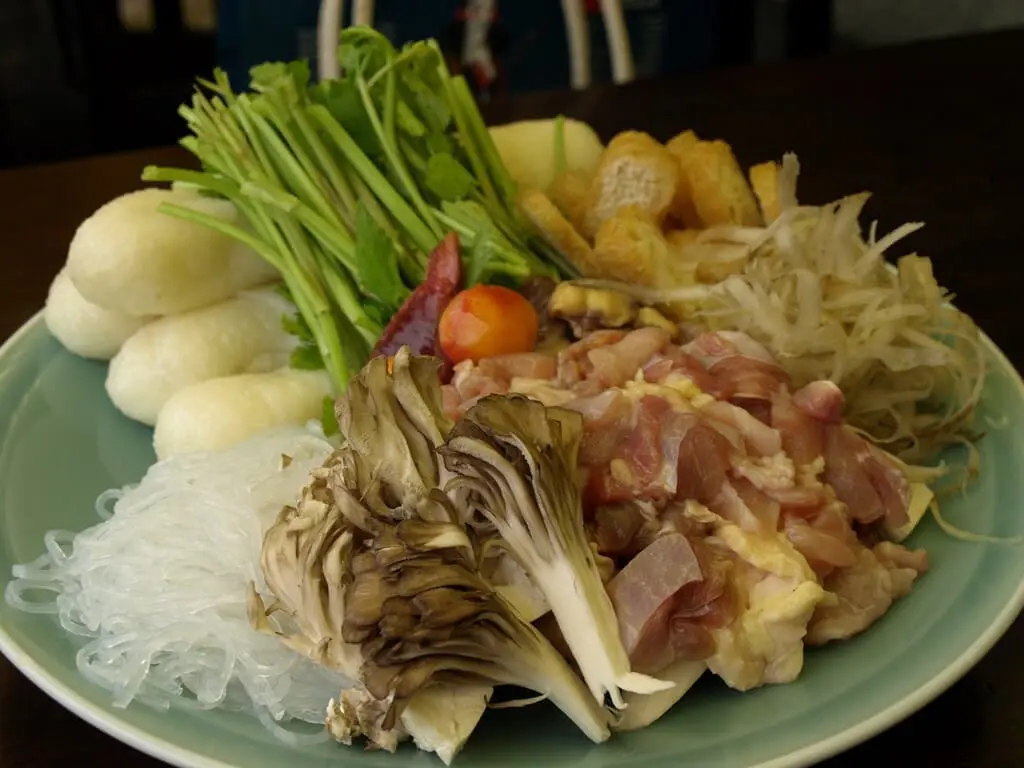A Japanese Cuisine Staple: How To Eat Sukiyaki

Sukiyaki a famous Japanese food, but what is it exactly, and how do you eat it? Read on to find out more about this delicious, filling dish.
Sukiyaki is an original Japanese hot-pot dish of thinly-sliced beef cooked on a shallow iron pan. It's known for its salty-sweet flavor, achieved from just the right balance of sugar and soy sauce. Aside from beef, the dish also features Japanese green onion, different varieties of mushrooms, tofu, noodles, among other ingredients. After cooking briefly in the stock, you dip your cooked ingredients in a little bowl with a beaten egg, and pop it in your mouth!
The 'Suki' in Sukiyaki Comes From an Old Farming Tool
Sukiyaki's popularity spread around the country in the late 19th century, towards the end of the samurai era. It's said that at that time, sauce was put into an iron pan, and slices of beef were cooked one-by-one on high heat, and then eaten, similar to the way that shabu shabu or yakiniku is eaten nowadays.
The name sukiyaki is said to have originated from the fact that during those times, when farmers were working outside, they would put game animals they had caught directly on their iron spades, and cook the meat by heating the spades.
Differences Between Kansai Sukiyaki and Kantō Sukiyaki

Photo by afrog_5130
About 80 or 90 years ago, a curious shift happened: sukiyaki changed from being a grilled food to being boiled! Interestingly, however, in the Kansai region people still grill the meat on the pan first to draw out the grease from the meat, then they put in the vegetables and take advantage of the water that leaves them, lastly adding sugar, soy sauce and other seasonings. This is called Kansai-style sukiyaki.

On the other hand, in the Kantō area they don't grill the meat beforehand, rather, they put the flavorings, namely soy sauce, sake, sugar, and mirin (Japanese sweet cooking wine), in the pot, and then boil the meat with the vegetables. This is Kantō-syle sukiyaki. The finished product doesn't differ greatly between Kansai and Kantō, as both styles involve dipping the ingredients in a beaten egg, and the flavor bases for both include soy sauce and sugar.
What to Watch for When Making Sukiyaki
Whether you cook your sukiyaki Kantō-style or Kansai-style, there are some key points to keep in mind in order to get the most delicious results.

Photo by Takashi Nakajima
First, you should take caution when putting the meat inside of the pan. When putting in shirataki (*1) (the white noodles in the picture above), make sure to separate them from the beef. This is because the shirataki noodles have lime from the calcium that was used during its processing, and this not only causes the meat's proteins to harden, but it also changes the meat from a brown to a black color.
You should also take care not to overcook the meat. If you cook the meat too much, the protein in the meat will get hard, and it won't be as delicious.
(*1) Shirataki: processed noodles made from the konyaku potato. The konyaku is made into a powder and kneaded with warm water. Lime is then added to this and the hardened mixture is pushed through thin holes into limewater.
How to Finish off Sukiyaki
Rice goes incredibly well with sukiyaki's salty-sweet flavors, so while we do recommend eating rice along with your sukiyaki, we also recommend that to finish your sukiyaki experience, you add in a different carbohydrate.
Probably one of the best known sukiyaki finishes is udonyaki. Udon is a type of thick noodle made from wheat. You let the thick, juicy remains of the sukiyaki sink into the udon noodles before eating them. You can just as easily use rice instead of udon, though if you prefer.
Along with tempura, sukiyaki is a food representative of Japanese cuisine, and is considered a treat for Japanese people, as well. If you've never had it, make sure to experience beef with these quintessential Japanese flavorings soon!
This is the official account of MATCHA's editorial department. Our articles feature useful travel information for visitors to Japan, from how-to guides to recommended places to visit.




































![[Coupon Available] Attention Overseas Winter Sports Fans! Nagano's Sports Depot Has Evolved](https://resources.matcha-jp.com/resize/720x2000/2026/01/05-254819.webp)
![[2 hours from Tokyo ] 10 Quiet and Breathtaking Views of Mount Fuji in Yamanashi Hokuto City , Yamanashi - Part 2](https://resources.matcha-jp.com/resize/720x2000/2025/12/16-253037.webp)
